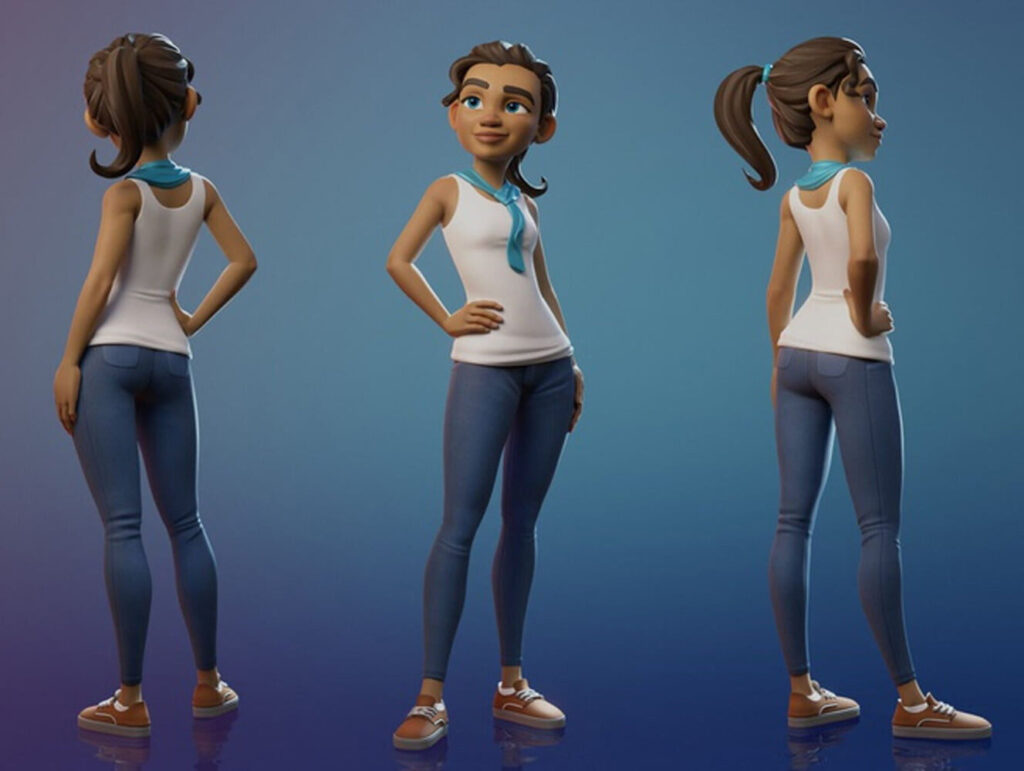By Garbanzo– Motion Graphics and Animation Studio
The Power of Imagination Meets Technology
Every extraordinary creation begins with a spark. A thought, an idea, a vision that exists only in the imagination. In the realm of 3D animation, this spark becomes the foundation for an incredible journey—a journey that transforms abstract ideas into stunning visual realities. At its core, 3D animation is the art of breathing life into concepts, of crafting something from nothing, and of creating experiences that captivate, engage, and inspire. This is the essence of 3D production and 3D video production, where imagination meets technology to shape compelling visual narratives.
Unlike traditional forms of media, 3D animation allows for complete freedom. Gravity, scale, and logic are flexible. Want to explore the inside of a product? Zoom through it in a dynamic fly-through. Want to showcase an idea that doesn’t yet exist? Build it digitally, bring it to life, and let your audience experience it as if it were real. That is the unique power of 3D animation: turning imagination into immersive visual stories through the power of 3D production.

The Creative Process: From Sketch to Screen
So, how exactly does an idea leap off the page and into a fully animated 3D world? The process, though deeply creative, is also methodical. It combines artistry with advanced software, and intuition with precision. Let’s take a closer look at how it all unfolds.
1. Concept and Storyboarding
It all starts with a vision. Whether it’s a product, a service, or an abstract idea, the first step is to define the goal. What story are we telling? What emotion are we evoking? What is the message? From here, storyboarding takes shape—a series of visual panels that outline the flow of the animation, scene by scene. This becomes the roadmap, guiding every step that follows.
Great storyboards are more than just sketches; they capture the energy, pacing, and mood of the final piece. This phase is where creativity flows freely, and ideas are explored without the constraints of technical execution. It’s a brainstorming session in visual form, one that sets the tone for the 3D production process to come.
2. 3D Modeling
Next comes the construction phase. In 3D modeling, digital artists sculpt objects, characters, and environments in a virtual space. It’s like creating a sculpture, but with pixels instead of clay. Every detail matters—from textures to dimensions, the models must be both aesthetically appealing and functionally accurate. This phase lays the groundwork for the entire animation.
Modeling is where the imagination begins to take tangible form. Want to showcase a futuristic cityscape? Or maybe a detailed close-up of a product’s internal mechanics? This is the stage where those visions become visible. Using software like Blender, Maya, or Cinema 4D, artists create models that serve as the foundation for dynamic and immersive 3D production.
3. Rigging and Animation
Here’s where the magic really starts to happen. Rigging gives these models a digital skeleton, allowing them to move naturally. Whether it’s a character walking, a product unfolding, or an abstract shape transforming, rigging makes movement possible. Then, animators step in to choreograph these movements, breathing life into still objects. Timing, fluidity, and emotion are key.
Animation isn’t just about movement; it’s about expression. Subtle gestures, dramatic transitions, and dynamic camera angles all come into play to evoke the right emotional response. Through expert rigging and animation, 3D production turns static visuals into compelling narratives that move audiences.
4. Lighting and Rendering
Just like in photography or film, lighting in 3D animation sets the mood. It highlights textures, creates shadows, and gives depth to the scene. Rendering takes all the visual data—models, textures, lighting—and processes it into a finished image or sequence. It’s a meticulous task, but one that transforms raw elements into polished visuals.
Advanced rendering techniques such as ray tracing and global illumination add realism and depth, making scenes feel lifelike. This step is where technical expertise meets artistic intuition, culminating in the final look and feel of the animation. A well-rendered scene is the crown jewel of any 3D production.
5. Post-Production and Effects
In the final phase, the animation gets its finishing touches. Post-production includes color correction, adding visual effects (VFX), sound design, and sometimes voiceovers. These elements enhance the storytelling, making the animation not just seen, but felt. This stage exemplifies the finesse and attention to detail that defines professional 3D production.
Sound design is especially crucial, as it adds another layer of immersion. A well-timed sound effect or music score can elevate the impact of a scene, turning good animation into an unforgettable experience.
Why 3D Animation Works So Well
3D animation isn’t just eye candy. It’s a powerful tool for communication. In a digital world where attention spans are short and competition is fierce, 3D visuals capture attention quickly and hold it longer. They simplify complex ideas, engage emotions, and provide a sensory experience that’s hard to forget.
For businesses, 3D animation offers versatility. Product demos, explainer videos, architectural walkthroughs, educational content, virtual reality experiences—the applications are endless. It allows brands to present themselves in innovative, memorable ways. With the help of expert 3D production, businesses can craft visuals that stand out in a crowded digital landscape.
3D animation also provides consistency and control. Unlike live-action, where variables can change from shoot to shoot, 3D environments remain consistent and customizable. This makes them perfect for brands seeking a polished, high-end look that reflects their identity across all platforms.

Real-World Impact: Animation in Action
Consider the tech industry, where products are often intricate and not easily demonstrated through traditional means. 3D animation allows viewers to see inside devices, understand how they function, and visualize the benefits. In healthcare, it helps illustrate procedures and educate patients. In education, it transforms dry material into engaging content that resonates with learners.
Even in entertainment, 3D animation shapes the worlds we escape into—from blockbuster films to immersive video games. Its impact is everywhere. 3D production is not just a trend; it’s a transformative tool that elevates storytelling and brand messaging across industries.
The Emotion Behind the Pixels
What makes 3D animation truly compelling isn’t just its visual appeal. It’s the emotion it evokes. A well-executed animation doesn’t just inform; it connects. It sparks curiosity, builds excitement, and sometimes even tugs at the heartstrings. It’s storytelling at its finest, blending technology with the timeless art of narrative.
When a brand wants to inspire, educate, or entertain, 3D animation offers a canvas with limitless potential. It allows ideas to transcend reality and enter a space where anything is possible. That’s where the magic lies—in the ability to create experiences that are not just seen, but felt. This emotional resonance is one of the key reasons why 3D production and 3D video production continue to grow in popularity across industries.
Looking Ahead: The Future of 3D Animation
As technology evolves, so does the potential of 3D animation. Real-time rendering, augmented reality (AR), virtual reality (VR), and AI-driven animation are pushing boundaries. What was once limited to big-budget productions is now accessible to businesses of all sizes.
The future holds even more interactivity, personalization, and immersion. Imagine animations that respond to viewer input, or virtual environments that users can explore freely. The possibilities are growing, and with them, the opportunities to connect in new, meaningful ways.
As tools become more accessible, creativity will be the defining factor. Businesses that embrace innovation and invest in high-quality 3D production will have a competitive edge, capturing audiences and driving engagement like never before.
Conclusion: Bringing Your Vision to Life
3D animation isn’t just about pixels and polygons. It’s about vision. It’s about taking that fleeting idea—the one that keeps popping into your head—and making it real. Whether it’s showcasing a product, telling a story, or explaining a complex concept, 3D animation has the power to elevate your message and engage your audience like never before.
At its best, animation doesn’t just show. It transports, transforms, and inspires. And in a world overflowing with content, that kind of magic is exactly what stands out.
So the next time you wonder if your wildest idea can come to life—know that with 3D animation and expert 3D video production , the answer is always yes.



